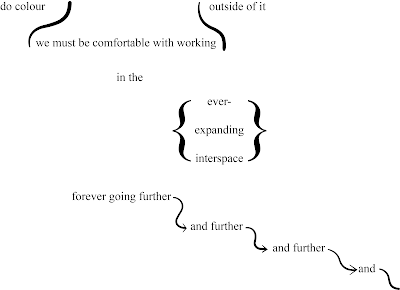QUICK OVERVIEW AND LINKS TO THE OTHER THEMES AND CHAPTERS IN THE BOOK
We come, finally, to the last chapter of the Atlas, and with it, the initial series of blog posts covering the entire book.
Here is a summary of those posts and our core themes:
The first major content theme in The Atlas of Social Complexity is Cognition, Emotion and Consciousness. This first theme includes six chapters, which I have so far blogged on. Chapter 6 addresses autopoiesis. Chapter 7 turns to the role of bacteria in human consciousness. Chapter 8 explores how the immune system, just like bacteria and cells, is cognitive – and the implications this has for our wider brain-based consciousness. Chapter 9 explores a complexity framing of brain-based cognition, emotion and consciousness. Chapter 10 explores the complex multilevel dynamics of the Self. Chapter 11 is about human-machine intelligence.
The second major content theme in The Atlas of Social Complexity is The Dynamics of Human Psychology. So far for this theme, I’ve given a basic overview, found here. I then moved on to the first theme, Human psychology as dynamical system (Chapter 13). From there I reviewed Chapter 14: Psychopathology of mental disorders ; Chapter 15: Healing and the therapeutic process; and Chapter 16: Mindfulness, imagination, and creativity.
The third major theme is living in social systems (Chapter 17). The first chapter in this section is Complex social psychology (Chapter 18). From there we move on to Collective behaviour, social movements and mass psychology (Chapter 19). Next is Configurational Social Science (Chapter 20). From there we move to the Complexities of Place (Chapter 21); followed by Socio-technical Life (Chapter 22). Chapter 23 turned to the theme of Governance, Politics and Technocracy. Chapter 24 focused on The Challenges of Applying Complexity. Chapter 25 focused on Economics in an unstable world. And, finally, Chapter 26 focused on resilience and all that jazz.
Chapter 27 introduces the final theme of the book, Methods and complex causality. It begins with Chapter 28, Make Love, Not Models and then moves on to Chapter 29, Revisiting Complex Causality. Chapter 30 maps the new methodological terrain. Chapter31 takes on the issue of philosophical complexity and outlining our approach, complex realism.
The Sixrth and final theme, The Unfinished Space (Chapter 32) ends by not ending.
THE UNFINISHED SPACE
The final chapter of The Atlas of Social Complexity is our unfinished ending: an open space rather than a final word. We chose not to close the circle but to celebrate its non-closure. The study of social complexity, as we’ve learned from the interviews we conducted for this book, the literature we reviewed, and our own ongoing experimentation across disciplines, thrives when it resists premature conclusions.
We take seriously the generative power of incompleteness, not as a flaw, but as a vital condition for creativity, emergence, and new insight. This chapter is both reflection and invitation: to embrace porousness, to foster discomfort, to wander ‘rhizomatically’ through social systems as through a city without a centre.
Rather than resolving complexity, we call for its re-imagination. We draw from the arts, jazz, speculative cartography, and moments of collaborative improvisation. We highlight the danger of retreating into silos, of reducing complexity to normative procedures or narrow metrics. Across conversations and terrains (from symptom networks to actor-networks, urban flows to policy knots) we witness a common thread: the need to stay open, to keep the system leaky.
This is not easy. Becoming transdisciplinary means being willing to feel lost. It means resisting the institutional push for closure, while also cultivating the craft, care, and curiosity needed to stay in the work. Education, too, must be rethought, not as instruction in tools but as apprenticeship in thinking, failing, and sensing the edge of the known.
We leave this Atlas unfinished on purpose. The chapters do not converge on a grand theory. Instead, they open onto a space of adjacent possibles. Like the megalopolis with its tangled corridors and surprise exits, this final chapter is less a map than a membrane, inviting you, the reader-traveller, to walk, improvise, and reassemble the terrain for yourself.
Here, then, are the terrains we reflect on in this final chapter, mapped loosely, nonlinearly, in the same spirit with which we travelled:
· The art of staying unfinished: why incompleteness is not failure but method
· Unease and comfort: how structure soothes but also constrains the complexity imagination
· The rhythm of contradiction: our paradoxical urge to both expand and contain the field
· Rhizomes: the city as metaphor, the map as open architecture
· Porosity and permeability: how we design membranes, not walls, for transdisciplinary practice
· The lure of the un-grasped: why complexity attracts those drawn to edge terrains
· Productive struggle: how our interviewees created generative friction across boundaries
· Organising for emergence: improvisation, jazz, and institutional design for collective creativity
· Listening as method: how conversation and rhythm shape collaborative intelligence
· Becoming transdisciplinary: why this is a journey, not a state
· Becoming educated: complexity as an apprenticeship in curiosity, not a credential
· Cartographies of refusal and invitation: the ethics of leaving space unfinished
Let this chapter, then, remain porous. A threshold rather than a gate. An atlas, yes! But one with missing pages, unfinished sketches and maps, and journeys waiting for others to take.



No comments:
Post a Comment